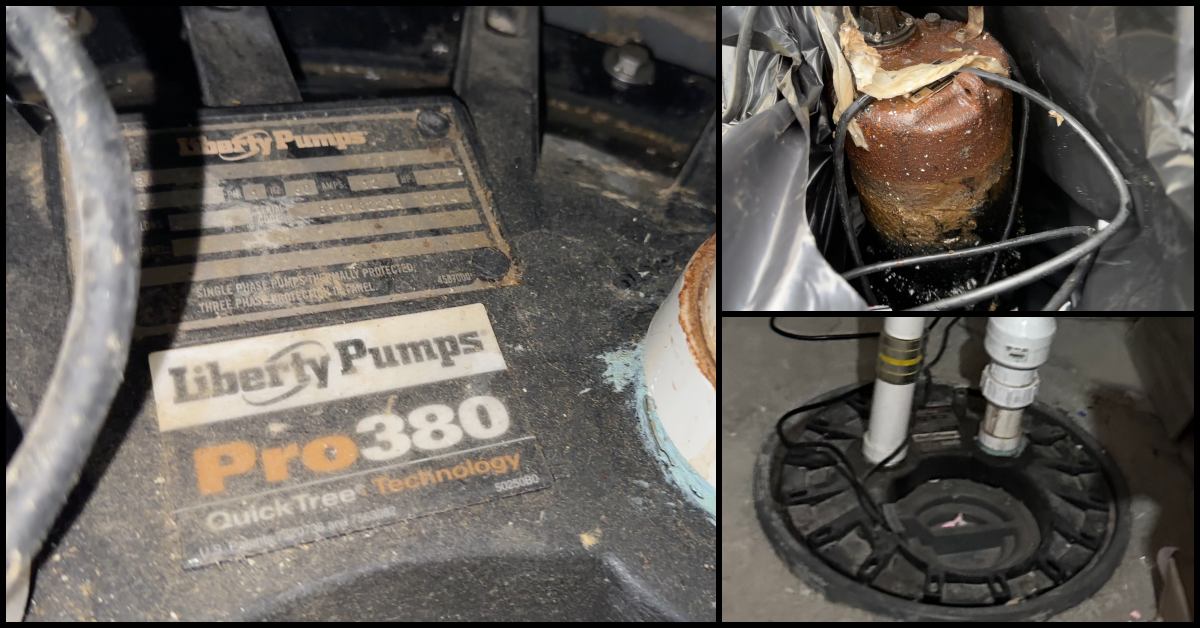Liberty Pumps Pro 380 Failure
Sewage Pump Trip GFCI
The heart of a functional basement sewage system is undoubtedly the sewage pump. For a decade, our trusty Liberty Pumps Pro 380 had served us well, but recently, it began showing signs of fatigue, leading us on a journey of maintenance, troubleshooting, and eventually, replacement. This blog post details our experience, the challenges we faced, and how we resolved the issue of our sewage pump repeatedly tripping the Ground Fault Circuit Interrupter (GFCI).

Our Libery Pump Pro 380
The Initial Problem
About 10 months ago, we first encountered a problem with our Liberty Pumps Pro 380. The pump tripped the GFCI, a critical safety feature that prevents electrical shocks. At that time, a local plumber managed to fix the issue simply by resetting the switch. This solution seemed effective, but it was only a temporary fix.
Escalating Issues
Fast forward to recent weeks, the pump started tripping the GFCI more frequently ? more than three times a week. This was not only inconvenient but also concerning, as it hinted at a deeper underlying problem. Frequent tripping of the GFCI is often a sign that the pump is drawing more power than the electrical circuit can handle.
Decision to Replace
After some deliberation, we decided it was time to replace the pump. Considering it was ten years old, it had reached the typical lifespan of an average sewage pump. Continuous usage over a decade can lead to wear and tear, reducing the efficiency and safety of the pump.
Choosing the Right Replacement
We called upon a local sewage pump expert for this task. The goal was to install a new pump that wouldn't draw excessive power, thereby avoiding the issues we faced with the older model. It was important for us to choose a pump that was not only efficient but also compatible with our existing sewage system and electrical setup.
The Replacement Process
The plumber recommended a model that was known for its energy efficiency and reliability. The replacement process involved:
Disconnecting the Old Pump: This was done with care, ensuring that all electrical connections were safely handled.
Removing the Old Pump: The decade-old Liberty Pumps Pro 380 was removed from the sump pit.
Installing the New Pump: The new pump was carefully installed, with attention to its positioning, connections to the sewage line, and electrical hookup.
Testing the System: After installation, the system was thoroughly tested to ensure that everything was working correctly and that there were no issues with tripping the GFCI.
Conclusion
Replacing our basement sewage pump was a necessary and enlightening journey. Not only did it resolve the immediate issue of the GFCI tripping, but it also provided us with a more energy-efficient and reliable system. It's a reminder of the importance of regular maintenance and the need to be attentive to the signs of wear and tear in household appliances. We're now confident that our new sewage pump will serve us well for many years to come, keeping our basement dry and our electrical system safe. Remember, when dealing with such critical components of your home, always consult with professionals to ensure safety and efficiency.
